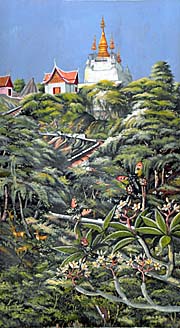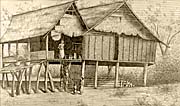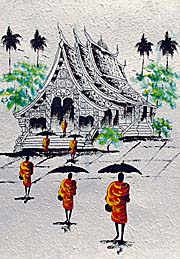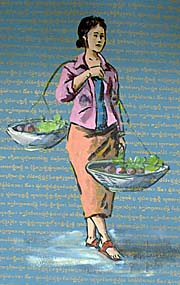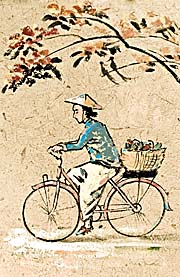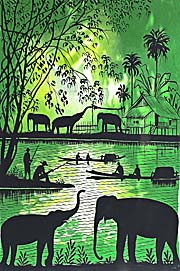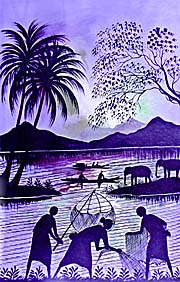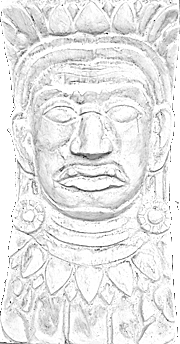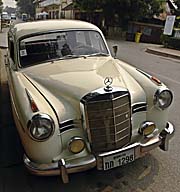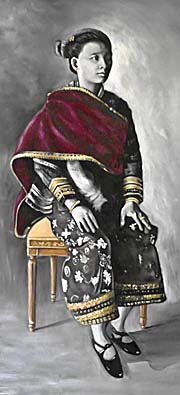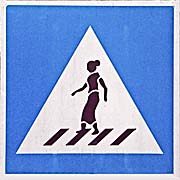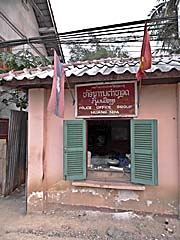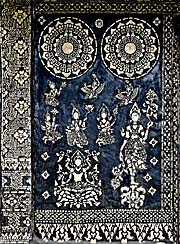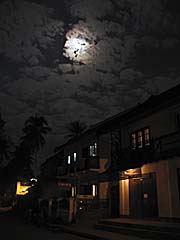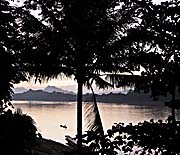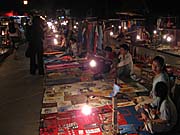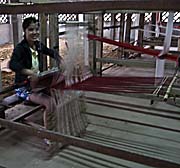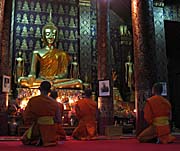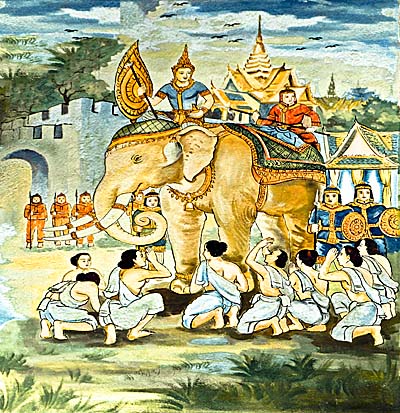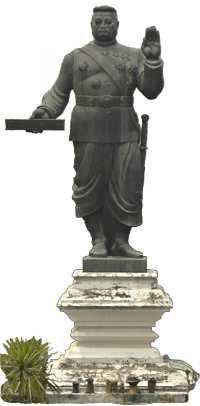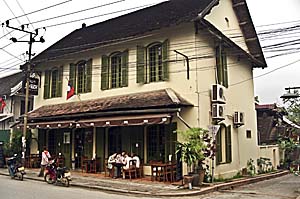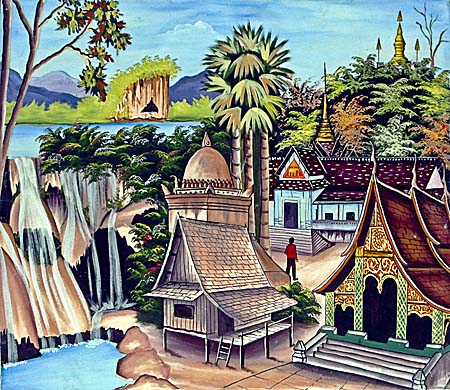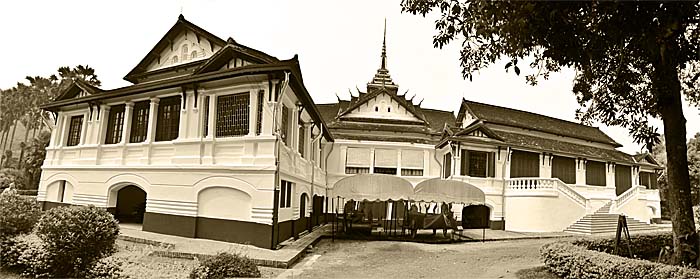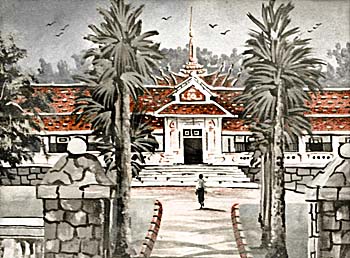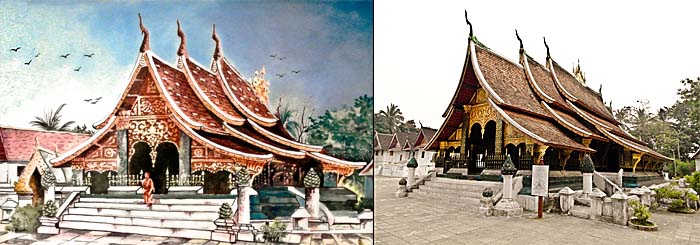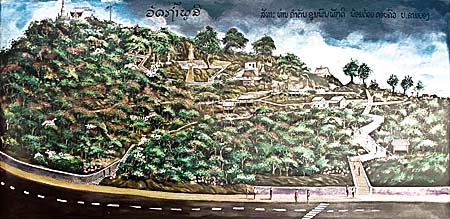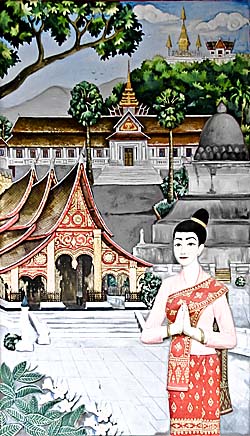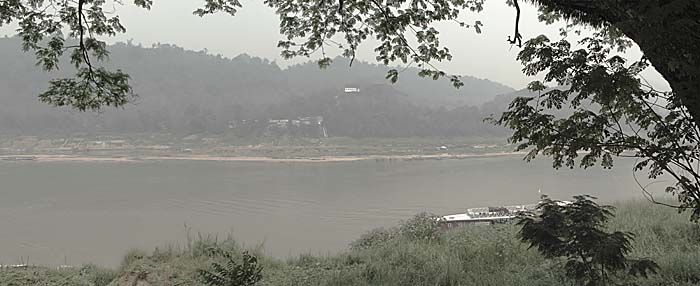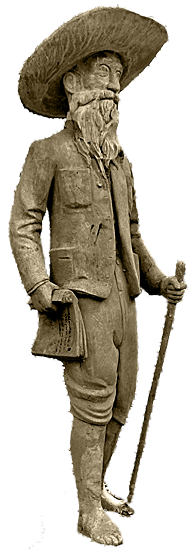1.
Luang Prabang
The legendary town of Luang Prabang in the north of Laos is a centerpiece of the country for it's cultural heritage and it's attraction to international tourists. The historical Laotion architecture here consists of a number of temples, of whom only one is really old (Vat Xieng Thong Ratsavoravikanh, 16th century); the others were all destroyed in the 19th century and later rebuilt.
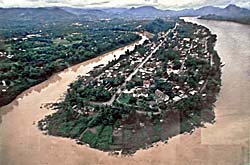
An aerial view on Luang Prabang. The place is situated on a peninsula; on the right side is the mighty Mekong River, left is the Khan River, joining the Mekong at this point. Well to see is also the straight main road. Photograph seen in a hotel in Luang Prabang. Image by Asienreisender, 2013
Luang Prabang is situated in the mountains on an altitude of some 700m above seal level at the confluence of the Nam Khan (Khan River) and the Mekong River.
The town of Luang Prabang was the capital of the old, medieval kingdom Lan Chang, the 'Land of the Million Elephants'. There is a Royal Palace left in Luang Prabang, which houses today a national museum. Opposite of the entrance to the king's palace is Phousi Mountain situated. Climbing the mountain leads to a number of temple buildings, some stairways and on the very top of the mountain is Wat Tham Phousi. From there one has a great view over the wider surroundings of Luang Prabang. That's, however, not so between February/March and the beginning of the rainy season in May/June for the heavy air pollution (see below and check the article on air pollution in the Golden Triangle).
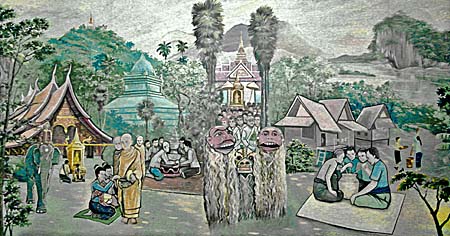
Some of the rarities of Luang Prabang. Painting seen in a hotel in Luang Prabang. Image by Asienreisender, 2013
Of all the temples Vat Xieng Thong Ratsavoravikanh is the most famous and precious. It represents a typical Luang Prabang architectonical style with it's big, unique roofs.
Another tourist attraction is the daily night market on the main road, where a great deal of local products are sold. Most of it are textile products, wooden art and some antiques of questionable quality.
Additionally there are several buildings left in the place who were built by the French in the colonial era, giving Luang Prabang a special flair.
For a more detailed introduction into Luang Prabang's sights check the link.
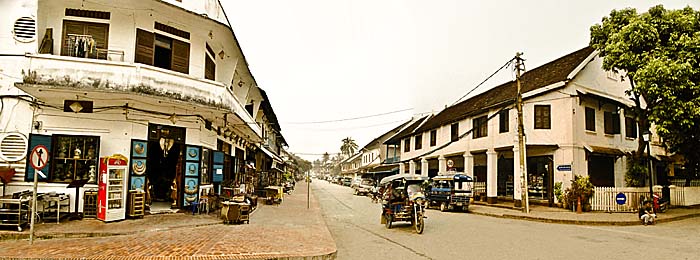
The eastern part of Luang Prabang's main road 'Sakkaline Road'. Image by Asienreisender, 2013
Nowadays Luang Prabang has some 50,000 inhabitants. It is connected to Vientiane via Vang Vieng by national road 13; to the north it's connected to Udomxai, the hub for the traffic in northern Laos. From there are connections to Thailand, Vietnam and China. Coming from north Thailand via Chiang Khong/Huayxai it's possible to reach Luang Prabang by boat on the Mekong River. There are no slowboats going further down to Vientiane. They ceased service some five years ago. But it's possible to go on the Nam Khan (Khan River) and Nam Ou (Ou River) upwards to Nong Keaw/Muang Noi.
Besides there is a small airport near Luang Prabang. There are planes to and from Vientiane, Bangkok and Siem Reap.

Buddhist monks and novices around sunrise in the streets of Luang Prabang. They go for collecting alms (mostly food, sometimes clothes, amulets and also money). Image by Asienreisender, 2006
